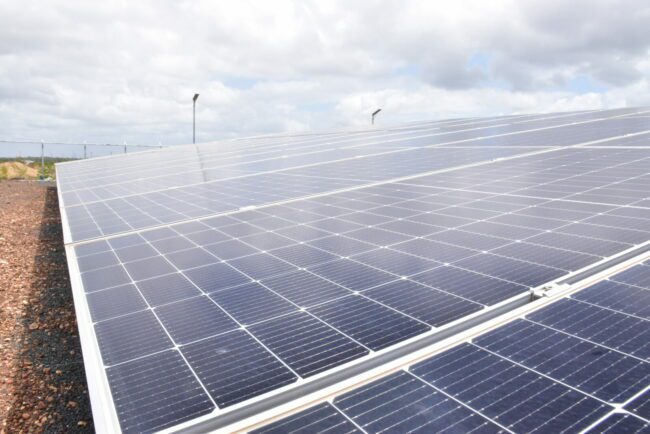Guyana has made it clear that it intends to stimulate growth with clean, cheap and reliable energy and it is already on that path. On Friday, the South American nation commissioned Lethem’s one-megawatt solar energy farm at a cost of GY$472 million.
With this commissioning, not only will 1,400 Region Nine residents benefit from cleaner, more reliable electricity, but the Lethem Power Company will also save millions in fuel generation costs since the project has reduced the need for 3,000 barrels of diesel bought annually.

This farm will join the fleet of others being established across the country, namely a 0.65-megawatt farm at Mahdia, Region Eight and a 0.6-megawatt farm at Leguan in Region Three. A 400-kilowatt farm has been completed in Mabaruma, Region One.
Over the next three years, solar farms are also set to be established on the Essequibo Coast, in Berbice and in Linden. Guyana will use funds received for its low deforestation rates to finance these eight much larger solar energy projects. In total, the projects will provide 27,000 households with cheap, clean energy – benefiting approximately 70,000 people.
Chief Executive Officer of the Guyana Energy Agency (GEA), Dr. Mahendra Sharma, said that adding solar power to the mix can be a “great opportunity” for business. A good demonstration of this is the case of Bartica and Lethem farms which were contracted under the Energy Matrix Diversification and Strengthening of the Department of Energy programme funded by the Inter-American Development Bank (IDB). Annual savings on fuel costs for 7,500 barrels amounts to GY$279 million at current fuel prices, between the 1.5 MW Bartica farm and the 1.0 MW Lethem farm.
These projects are in tandem with Guyana’s new and expanded Low Carbon Development Strategy (LCDS) 2030, which supports the use of clean and renewable energy sources. By 2030, it is estimated that 70% of Guyana’s energy will be supplied by green energy which includes hydro, wind and solar. The natural gas piped from the Liza 1 and 2 developments in the Stabroek Block will act as the transition fuel to renewable energy.



